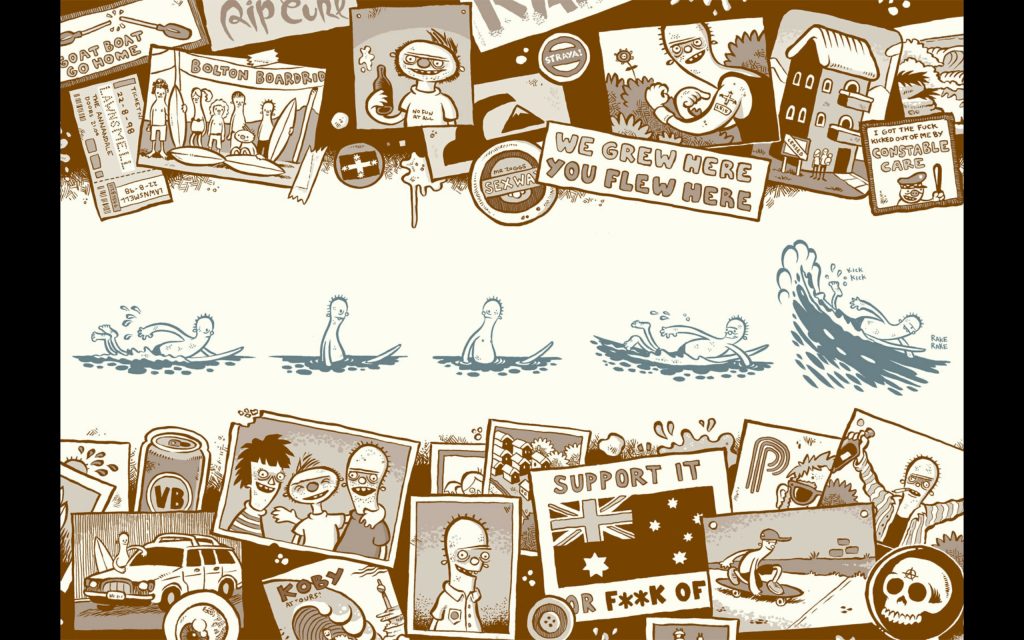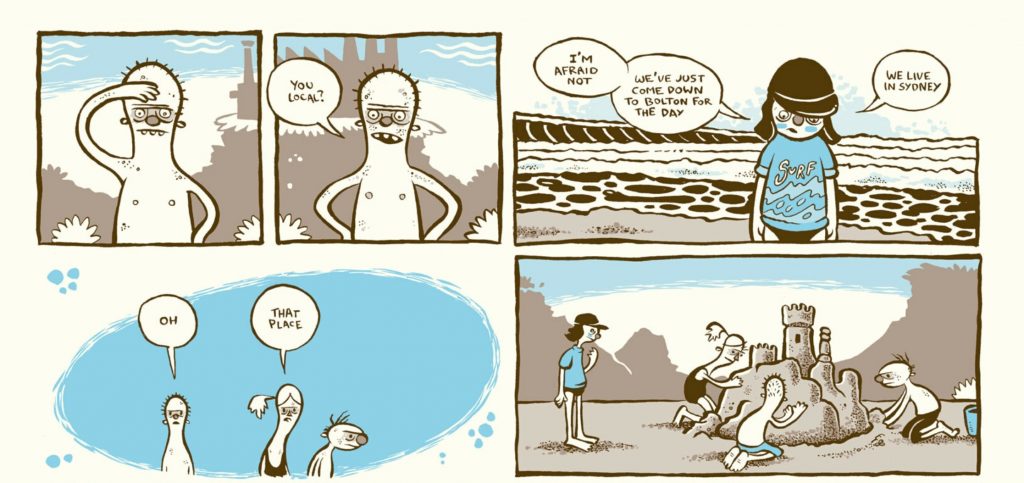by anonymous
Some things are scary. It can be the unknown in a dark alley, an old doll at a flea market, some irremovable stains, or simply the monsters under our beds. Sometimes it’s not physical, but only some unreasonable feeling in our guts. And sometimes it’s a whole composition of deeply rooted human fears, a cursed or blessed item, and the gut feeling combined.
That is what the woman in “Sleeping Dogs”, a short story written by Kirstyn McDermott, experiences. The story is part of Cthulhu Deep Down Under Volume 2, a collection of horror short stories published in 2018.
Our protagonist, a thirty-year-old woman called Ghost, is asked by her newest client to locate and secure a figure with only a sketch of the item. After a horrific nightmare, Ghost has a hunch about where to start and travels to Australia. A few weeks without any positive developments pass before she finds a new lead and eventually detects the required item. But as soon as she acquires it, her gut feeling and the people around her start to behave in strange manners, as if they are driven by other forces.
Ghost – a rather fitting name for the main protagonist of a horror short story, don’t you think? – has the ability to detect lost items. Not in the way a common detective would, but rather in a paranormal way. She is no magician or witch, yet always accompanied by a feeling in her guts that works like a metal detector, intensifying when her target gets closer.
Said gut feeling isn’t too scary, to begin with, but what makes the story sort of uncanny from the very beginning is the object Ghost has to locate. According to her client and her assistant, the last time the figure had been seen was about sixty years ago, and there are only two living people who ever caught a glimpse of it and could describe it.
But Ghost is encountered with the first real horror when she finds herself seemingly drowning, choked by muddy water, and surrounded by darkness and cold. A dream? A vision? It feels like it’s best to not know the answer.
The unknown which lingers in the darkness, in the “utter blackness that has never known the touch of light” (McDermott, 16), is something commonly feared by humans. It’s a deeply rooted instinct trying to protect us from potential dangers which remain unseen. Such invisible dangers and fiends are harder to deal with since most humans solely rely on their ability to see, instead of using their other senses.
Our protagonist luckily doesn’t have to face the fear of darkness for much longer but the next horrific element she encounters isn’t less frightening in any way, introduced by a strong inexplicable pain in her head. Ghost calls it a migraine, but a pain described as “colors [that] fracture and pulse in the centre of her vision, spreading rapidly, [making] her temples throb, [and causing] a dull ache […] along her jawline” (McDermott, 21) seems way too intense and sudden for a normal occurrence of migraine. This pain, and the fact that it was caused just by removing a wax seal from the figure’s box, revives the uncanny atmosphere in the short story. A strong migraine might not sound too scary for most readers but it is followed by a scene in which people around Ghost and the object start behaving oddly; somebody tries to steal the bag with the figure, and other people try to forcefully enter her hotel room. Ghost calls it a “matter of the walking dead” (McDermott, 25), referring to the people as zombies, which already sounds alarming. I think the idea of the stereotypical zombie would feel less sinister, considering that there is a visible cause that leads to people being zombified, but in the short story’s case, there is no disease, no chemical weapon, no virus; just an old figure. An old figure that erodes some sort of aura, strong enough to affect people close to it, within an unknown radius. This aura leads to people being externally controlled, by some force neither explained nor further investigated, but it’s safe to say that the affected people are not in charge of their bodies.
The short story makes use of several ways to create horror, angst, and an uncanny feeling. Deeply rooted fears, voices without origin, nightmares, and the fear of not being in charge of their own body; though luckily, our protagonist doesn’t have to experience them all. Using those different kinds of tropes creates a rich diversity of moments that might make you shiver in fear and expectation. Additionally, an allusion to a city mentioned in one of H.P. Lovecraft’s horror stories, “The Call of Cthulhu”, guides the reader’s mind into deeper spheres of horror.
The story begs the question: Should we always “let sleeping dogs lie” or should we, just like Ghost, wake them up and face them? Or is such adventurous behavior exclusive to stories and tales only?
What horrors might await once you start digging deep enough? You may go on a journey yourself, or maybe you prefer to follow another story’s protagonist. Either way, let me ask you: “What are your feelings about finding a lost city?” (McDermott, 30).






